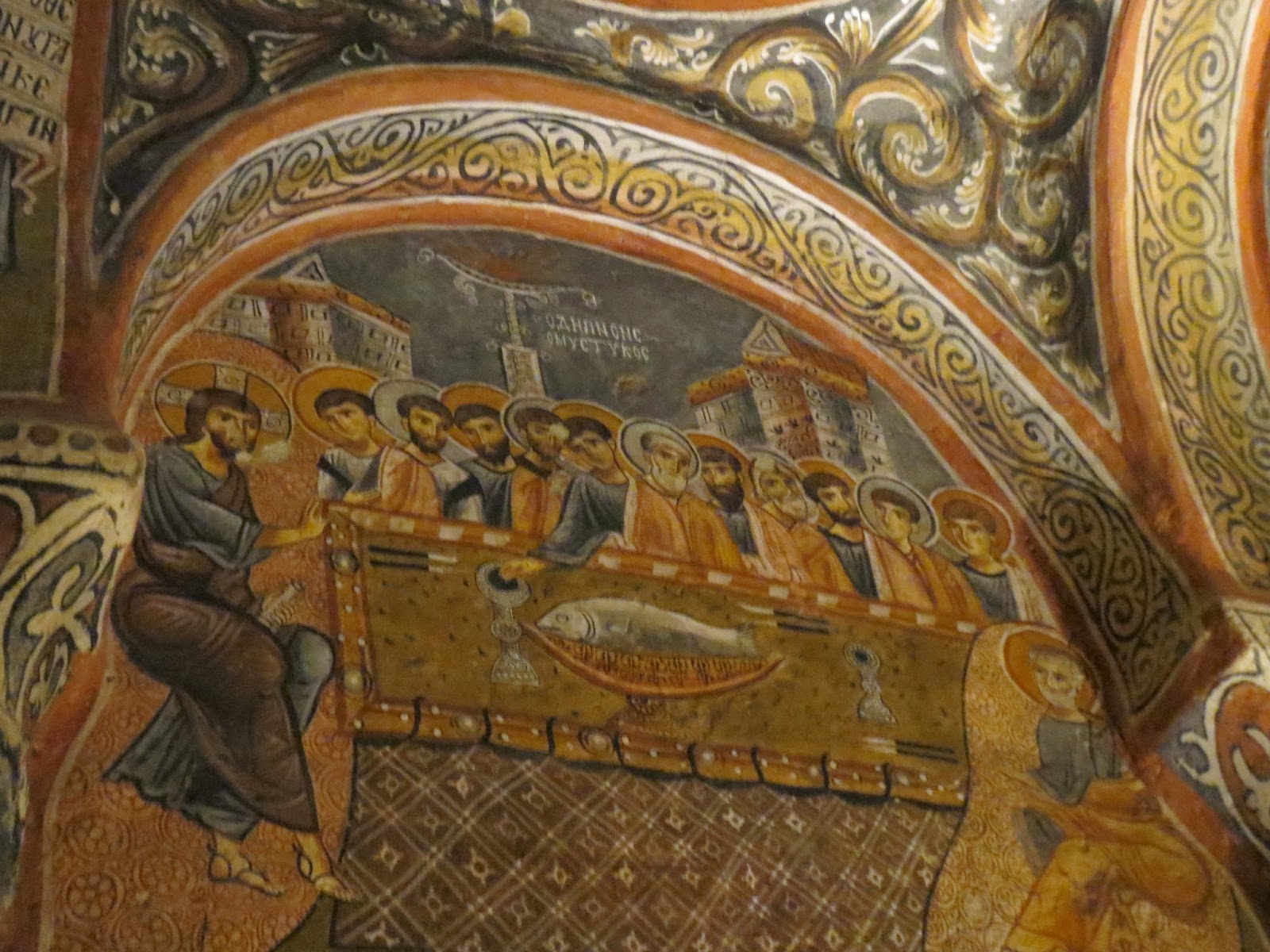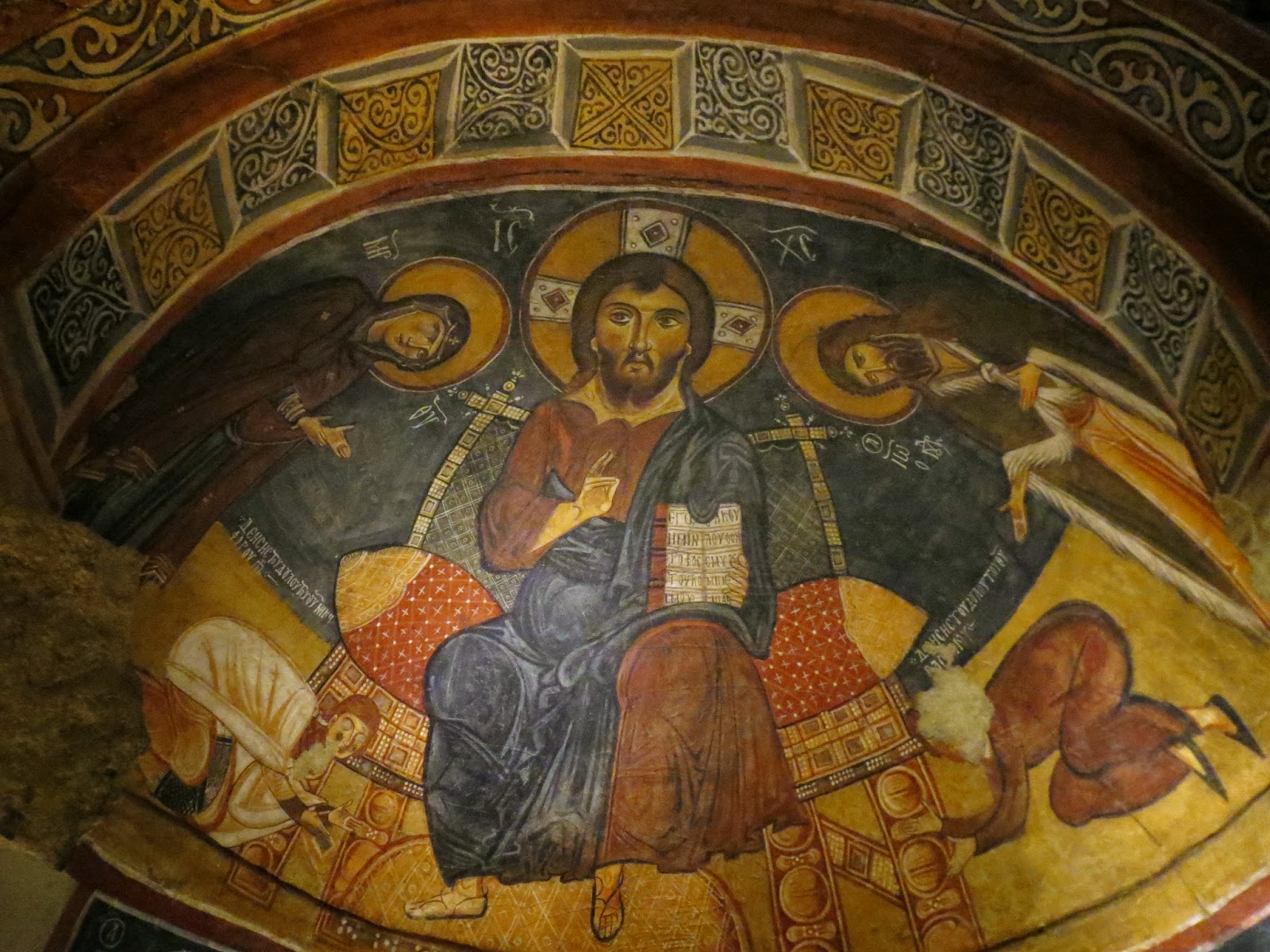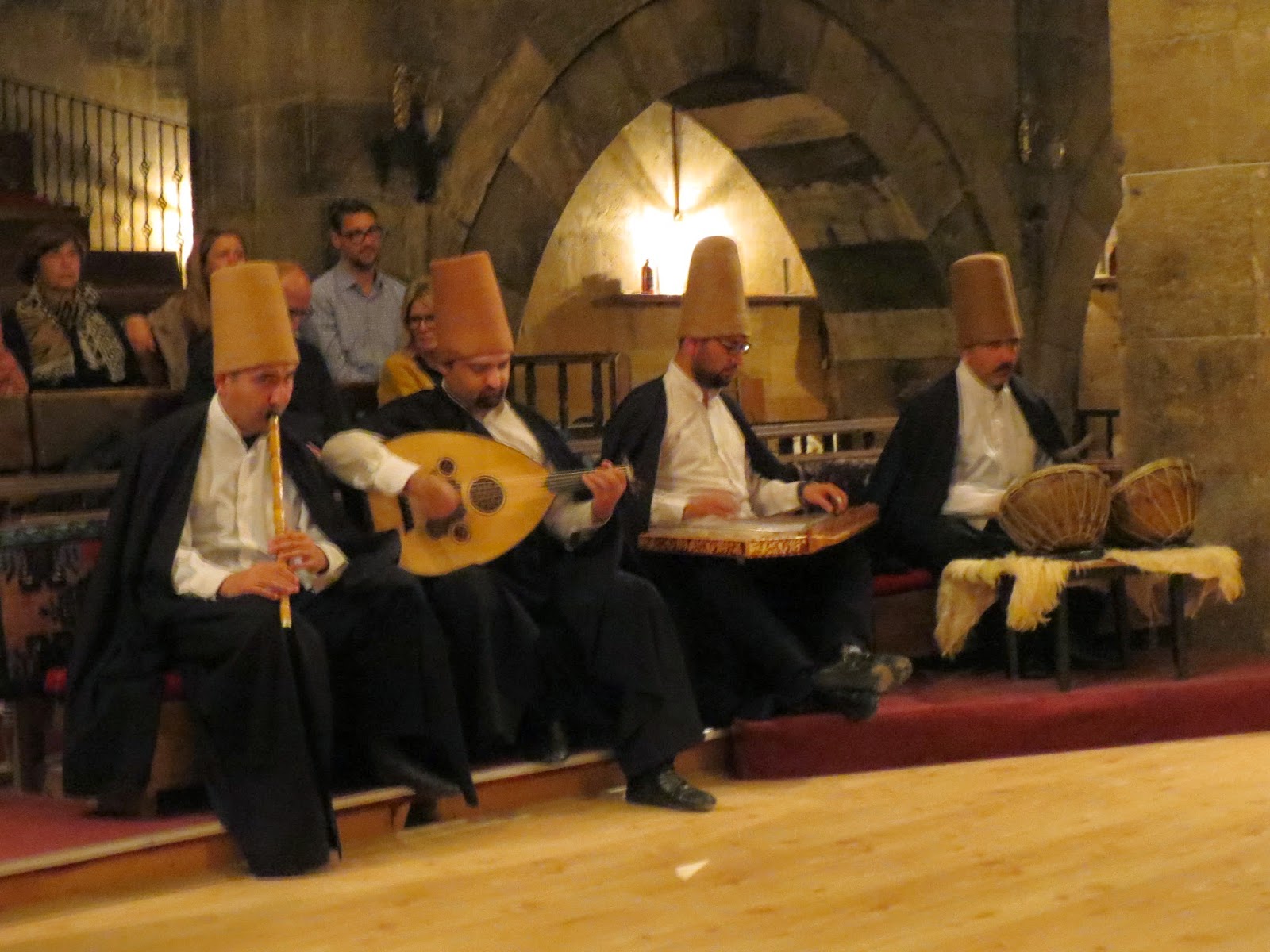My sincere thanks to you, Emi,
from Ottawa Montreal
We stayed in the town of Goreme in the middle of the region so we could easily tour from there and also see some of the most spectacular fairy chimney valleys in the region, and one of two regional UNESCO World Heritage Site’s Open Air Museums. The Goreme ‘museum’ is actually a cluster of fairy chimneys famous for its spectacular cave churches.
We walked about a mile out of
town to visit the museum, watching oodles of huge tour buses pass us as we were
able to take in the amazing sights around us one step at a time.
Once at the museum, we spent a few hours going from one hidden church to another as we traipsed up and down rocks, in and out of narrow crevices, and up fairly steep and very narrow steps that were the only way up AND down. That made for some tight maneuvering, let me tell you, because there were generally lots of people wanting to access the same spots we did.
As we entered the museum, the
first thing we saw was a steep rock simply called Convent and Monastery,
that housed a six story convent, which had a kitchen and refectory on the
lower levels and chapel on the third.
We could access the 11th C. wonderfully preserved frescoes of biblical scenes and saints’ portraits of the Elmali Kilesi aka Church with the Apple through a tunnel. The church has 8 small domes and 1 large dome and red ochre geometric designs and crosses.
Above is Barbara Kilise (kilise is Turkish for church). It had some frescoes but it was also decorated with red ochre symbols painted on the rock including some geometric designs. Normally when I, and I'm assuming you too, think of a church it's a lovely building made of wood, stone with an attractive facade. In Cappadocia, however, there are NO buildings identifable from the outside as being a church as all appear as simply big rocks, period. It's as if you were transported back to the Stone Ages and Fred and Wilma Flintsone were living next door. It's the uncanniest thing coming across huge rocks that are really churches and hold amazing frescoes and often the most colorful painitngs!
The most stunning church was the Karanlik or Dark Church
Once at the museum, we spent a few hours going from one hidden church to another as we traipsed up and down rocks, in and out of narrow crevices, and up fairly steep and very narrow steps that were the only way up AND down. That made for some tight maneuvering, let me tell you, because there were generally lots of people wanting to access the same spots we did.
The churches are laid out
counterclockwise so we simply followed the madding crowds from one church to
another. We had arrived at the museum mid morning about the same time as the
tour buses. We luckily had far more time than their passengers were allotted so
once the buses departed, it was almost as if we had the entire museum to
ourselves. What a difference that made.
Above is Barbara Kilise (kilise is Turkish for church). It had some frescoes but it was also decorated with red ochre symbols painted on the rock including some geometric designs. Normally when I, and I'm assuming you too, think of a church it's a lovely building made of wood, stone with an attractive facade. In Cappadocia, however, there are NO buildings identifable from the outside as being a church as all appear as simply big rocks, period. It's as if you were transported back to the Stone Ages and Fred and Wilma Flintsone were living next door. It's the uncanniest thing coming across huge rocks that are really churches and hold amazing frescoes and often the most colorful painitngs!
 |
To access the 11th C. Church on the Sandal we had to climb up a narrow metal ladder – once again the only entrance and exit, so a very tight fit at times when others were coming down when we were going up or vice versa! The church was named after the footprints, or indentations some might say, below the Ascension fresco. Some believe they were the casts of Jesus’ own footprints.
In the Refectory and Kitchen, we saw the huge rock-carved dining table that was packed at mealtimes with up to 40 priests. Carved into the opposite wall was a place allotted for wine making. There were a number of kitchens and storage rooms throughout the museum but nothing of great inte3rest to us, we thought.
Just across the main museum area and a short way down the road was the Tokali Kilese or Church with the Buckle, the oldest church and one of the largest and most impressive. The church is made up of an ‘
As we’d wandered through Goreme on the way to the
Steven, having lived for 2 years in Iran
After getting hopelessly lost in the pouring rain, we finally found our way back to the hotel just in time to be picked up at 5:30 to be taken for a Whirling Dervish ceremony in the town of Avanos 30 minutes away. After having visited the Whirling Dervish
 |
 |
Drinking very sweet apple tea
after the performance.
|















































































No comments:
Post a Comment